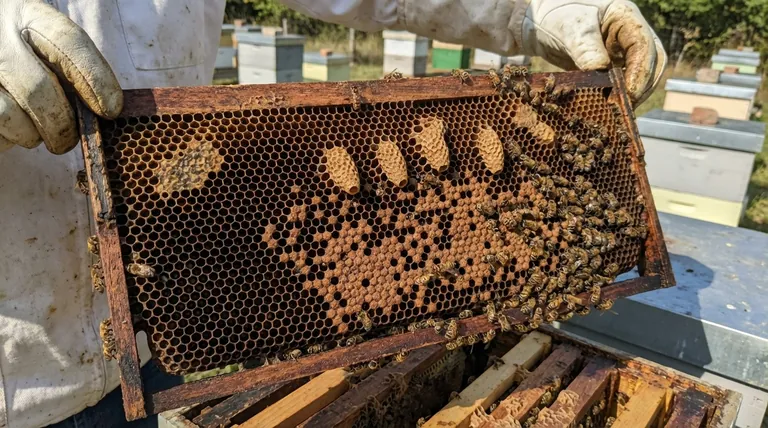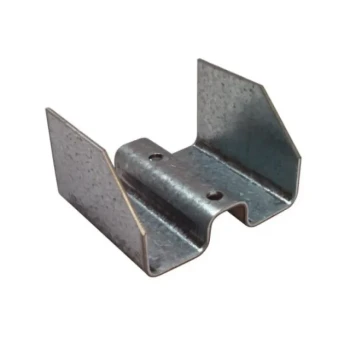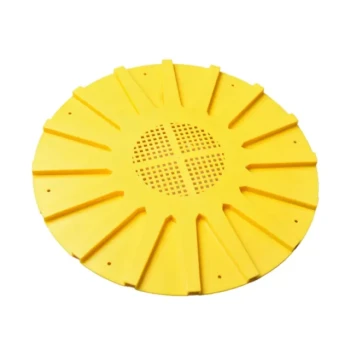Diagnosing a queenless colony requires looking past the hive's population and focusing on the state of the brood. The most definitive characteristics are a complete lack of fresh eggs and young larvae, often accompanied by the presence of emergency queen cells on the face of the comb. While other behavioral changes can occur, the brood pattern provides the most reliable evidence.
The single most reliable sign of a queenless colony is what is not there: eggs. A healthy queen is an egg-laying machine, and her absence creates a visible break in the colony's life cycle that is the first and most important indicator of a problem.

The Definitive Sign: A Break in the Brood Cycle
A colony's entire existence revolves around the queen and the brood she produces. Any disruption to this cycle is the most significant clue you can find during an inspection.
The Absence of Eggs
A productive queen lays between 1,500 and 2,000 eggs per day. You should be able to find frames with tiny, rice-like eggs, one per cell, standing straight up in the center.
If you inspect a hive and find no eggs whatsoever, the colony has been without a laying queen for at least three days.
Only Capped or Aging Brood
Without a queen to lay new eggs, the existing brood will continue to develop. You may see frames of larvae or capped pupae, but no fresh eggs or the tiny "C-shaped" larvae that precede them.
After about 21 days of queenlessness, the last of the worker brood will have hatched, leaving you with empty brood comb.
The Appearance of Queen Cells
As a last-ditch effort to survive, the workers will attempt to raise a new queen from the youngest remaining larvae (those under three days old when the queen disappeared).
These emergency queen cells look like peanut-shaped protrusions built directly on the face of the brood comb, rather than the swarm cells typically found along the bottom.
Secondary Indicators: Behavioral and Population Changes
While the brood frame tells the most accurate story, the colony's overall behavior and condition can provide supporting evidence. These signs should be considered secondary to the state of the brood.
An Unsettled Temperament
Queen mandibular pheromone (QMP) has a calming, cohesive effect on the colony. Without it, the hive can become noticeably agitated, defensive, or listless.
A common sign is a distinct, low "roar" that is different from the usual hum of a healthy hive. This is the sound of leaderless, unsettled bees.
Dwindling Population
Without a queen to replenish the workforce, the colony's population will slowly decline as older bees die off. This becomes most apparent three to four weeks after the queen is lost.
Poor Production and Hoarding
A queenless colony often loses its purpose. You may notice a sharp decline in foraging activity, leading to poor honey production and pollen collection. In some cases, bees may begin to use excessive propolis as a defensive response to stress.
Understanding the Pitfalls and Complications
Diagnosing a queenless hive is not always straightforward. Several situations can mimic queenlessness or complicate your assessment.
The "Laying Worker" Problem
If a colony remains queenless for an extended period (several weeks), the ovaries of some worker bees can develop, and they will begin to lay unfertilized eggs.
This is a critical state. The signs are multiple eggs laid haphazardly in a single cell, eggs stuck to the cell walls, and a spotty pattern of bumpy, capped drone brood inside normal worker-sized cells. A hive with laying workers will almost always reject a new queen.
Lingering Queen Pheromones
Immediately after a queen dies or is removed, her scent can linger in the hive for several days. During this window, the colony may still "feel" queenright.
This is why bees will sometimes destroy a new queen cell you introduce, as they have not yet fully registered their queenless state.
A Normal Brood Break
Do not immediately assume a lack of eggs means disaster. A newly emerged virgin queen needs time for mating flights before she begins to lay. It is normal to have a one- to two-week broodless period after a colony swarms or supersedes its old queen.
Making the Right Diagnosis for Your Hive
Interpreting the signs correctly is crucial for taking the right action to save your colony. Your response depends entirely on what you find on the frames.
- If your primary focus is confirmation: Look for eggs. Their presence means you have a laying queen, even if you can't find her. Their absence for more than a week is a clear warning sign.
- If you find no eggs but see sealed emergency queen cells: Your colony is already trying to fix the problem. The best course is often to wait and see if they can successfully raise a new, mated queen.
- If you find no brood of any kind and a declining population: Your colony has been queenless for over three weeks and is in peril. You must intervene immediately by introducing a mated queen or combining the hive with a queenright colony.
- If you see multiple eggs per cell and patchy drone brood: You have laying workers. This is a severe condition that requires advanced methods to resolve before the colony is lost completely.
Ultimately, careful and regular observation of the brood frames will empower you to confidently diagnose your colony's health and take decisive action.
Summary Table:
| Characteristic | Description | What It Indicates |
|---|---|---|
| No Eggs Present | No fresh, rice-like eggs standing upright in cells. | Colony has been queenless for at least 3 days. |
| Only Capped/Aging Brood | Frames contain only larvae or capped pupae, no new eggs. | The existing brood cycle is ending without replacement. |
| Emergency Queen Cells | Peanut-shaped cells built on the face of the comb. | Workers are attempting to raise a new queen from young larvae. |
| Agitated Temperament | A distinct low "roar" and defensive behavior. | Lack of queen pheromones is causing colony stress. |
| Dwindling Population | Noticeable decline in bee numbers over 3-4 weeks. | Workforce is not being replenished by a laying queen. |
| Laying Workers | Multiple eggs per cell, eggs on cell walls, spotty drone brood. | A severe, advanced state of queenlessness that is difficult to reverse. |
Is your colony showing signs of queenlessness? Ensure your apiary's health and productivity with the right tools.
A queenless hive can lead to a rapid decline and significant loss. For commercial apiaries and distributors, having reliable equipment is key to effective hive management and quick intervention. HONESTBEE supplies durable, high-quality beekeeping supplies and equipment through wholesale-focused operations, helping you maintain strong, productive colonies.
Let us help you protect your investment. Contact our team today to discuss your wholesale needs and ensure your operation is equipped for success.
Visual Guide

Related Products
- Nicot Queen Rearing Kit for Beekeeping and Grafting in Nicot System
- Retractable Chinese Queen Rearing Grafting Tools Equipment
- Jenter Queen Rearing Kit Complete Set for Bee Breeding
- Wooden Queen Bee Excluder for Beekeeping
- No Grafting Queen Rearing Kit: System for Royal Jelly Production and Queen Rearing
People Also Ask
- What are the methods of queen rearing? Master Grafting, Direct Lay & More
- What are the different methods for raising queen bees? Master the Trade-Off Between Simplicity and Control
- What is the Doolittle method of queen rearing? Master Controlled Queen Production for Your Apiary
- What are the benefits of queen rearing for beekeepers? Gain Total Control Over Your Apiary's Genetics
- How can beekeepers start a honey bee breeding program? Build a Superior, Resilient Apiary



















